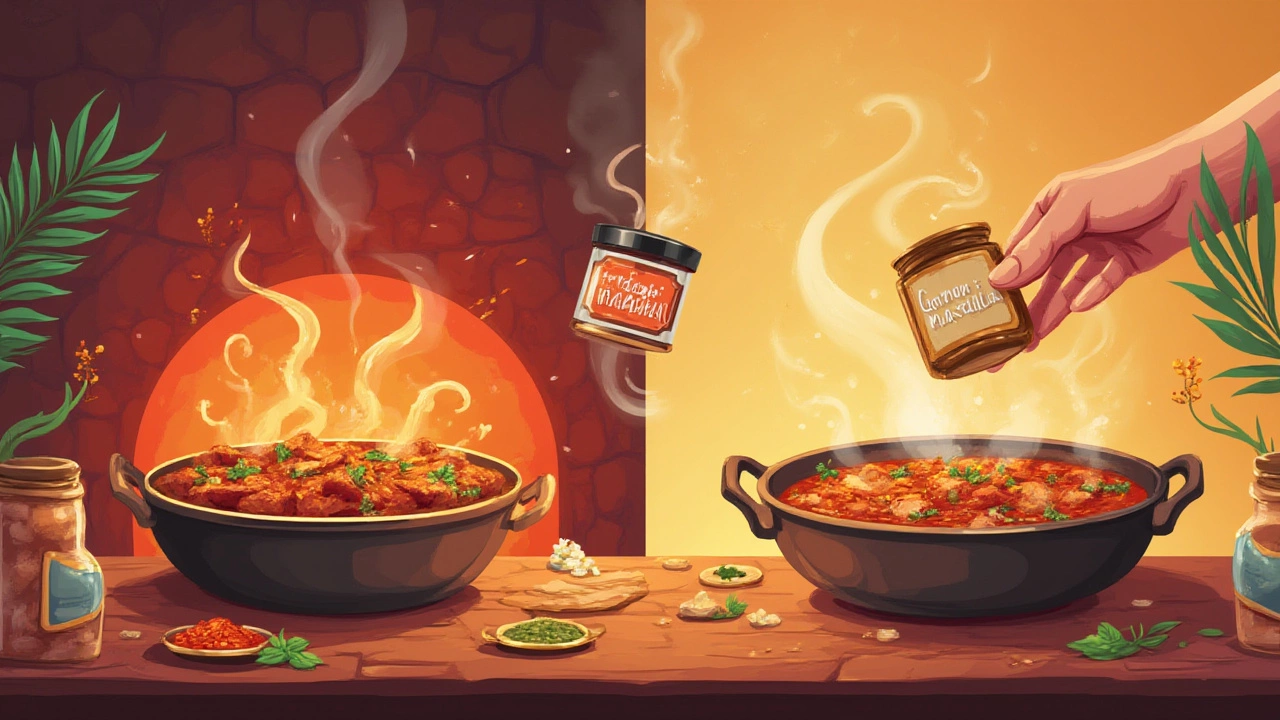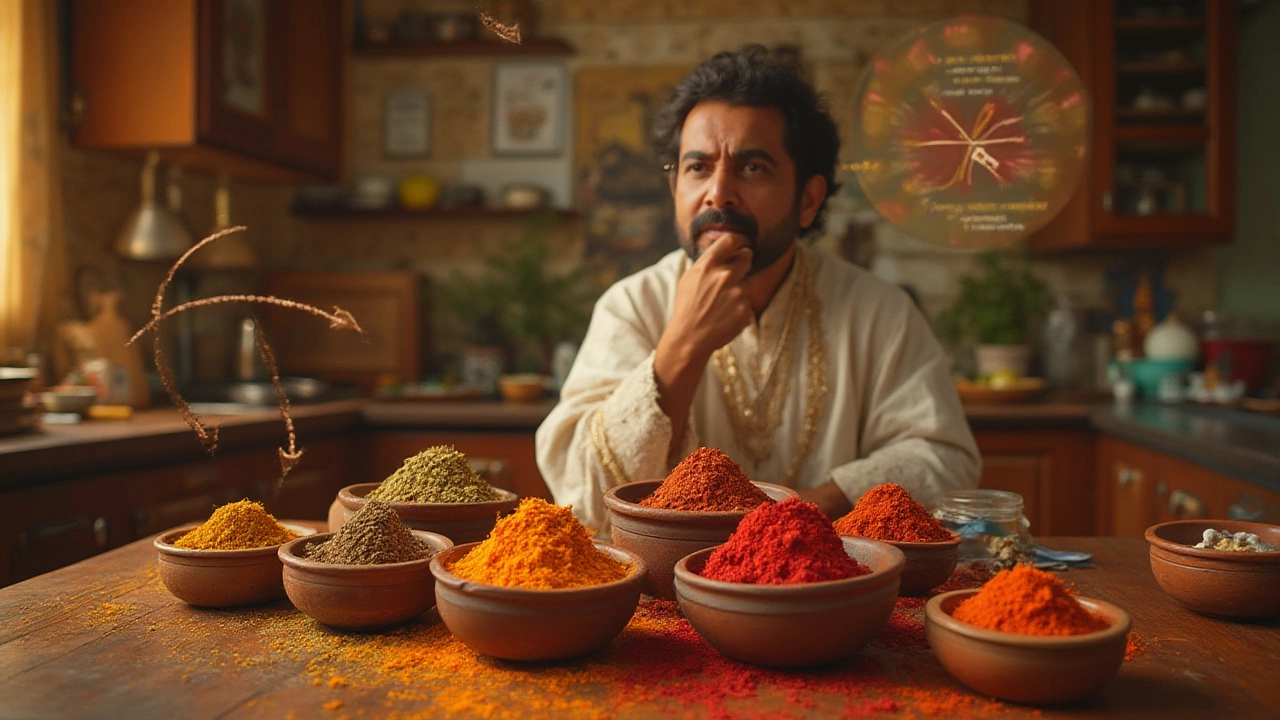Ever grabbed your favourite chicken thigh or a handful of fresh paneer, then realized you’re out of tandoori masala? The panic is real—do you raid the pantry for garam masala instead? Or will you ruin dinner? Plenty of home cooks have wondered about this swap, especially when time is short or the spice aisle runs dry. Here’s the thing: these two spice mixes sound a bit similar, and both have roots in Indian cuisine, but mixing them up can change the whole vibe of your dish. You might get away with it for a casual meal, but will it taste the same? Let’s tackle the burning question and clear up what you can—and can’t—do when it comes to tandoori and garam masala.
How Are Tandoori Masala and Garam Masala Different?
What’s inside the jar matters. Tandoori masala is specially crafted for that smoky, vibrant, North Indian style barbecue. It’s all about layering heat, tang, and colour. The classic blend throws together coriander, cumin, garlic powder, ginger, cinnamon, turmeric (that’s where the yellow-orange hue comes from), fenugreek, and smoky paprika. Often, there’s dried pomegranate seed or amchur (dried mango powder) for tang and a pop of red from chilli powder or Kashmiri chilli. You’ll get some instant color and sharp aroma right from the packet—perfect for marinades and roasting in smoky heat, like in a clay tandoor oven.
Garam masala, on the other hand, is the warm, fragrant backbone of so many Indian curries and dals. The basic combo is cardamom, cinnamon, cloves, cumin, black pepper, nutmeg, and bay leaf, toasted together for a sweet, earthy, complex aroma. Here’s the deal: garam masala usually skips the bright red powders, turmeric, and tart notes you find in tandoori masala. It doesn’t go for sharp tang—it focuses on subtle, warming depth instead. That’s why classic garam masala is brown, never red or orange.
Crazy fact: according to a 2022 poll in Mumbai, 64% of home cooks keep at least two versions of garam masala in their kitchen—one for the default curries, and a different blend for finishing dishes with a fresh zap of flavor.
And talk about regional differences! Punjabi tandoori masala always leans heavier on chili and garlic. Down south in India, what’s called tandoori masala might even include curry leaves and coconut powder. The tandoori masala in a ready-made packet often has added colorings for that showstopping red, while homemade versions tend to go easier on artificial stuff.
When Can You Substitute Garam Masala for Tandoori Masala?
Got a dinner emergency? In some cases, yes, you can use garam masala instead of tandoori masala, especially if you’re pressed for time. But you’ll notice a change—not just in flavor, but also color and aroma. Your chicken tikka or paneer marinade won’t get that fiery brick-red look or smoky punch, and the tangy twist will be missing. Instead, you’ll get a softer, rounded, almost sweet warmth in the background—that’s the garam masala taking charge.
A smart cook in Auckland once told me, “If I have only garam masala, I add extra smoked paprika, a squeeze of lemon or a spoon of amchur, plus a little turmeric and chili powder to fake the tandoori vibe.” That’s a hack many home chefs swear by. It’s not an exact match, but it gets close if you just want to make dinner work.
If you’re marinating chicken, fish, paneer, or veg for a quick oven bake, go for the swap—just toss in a bit more lemon juice and a dash of chili powder. But for grill-heavy tandoori parties where the signature red color and punch are the stars, the swap might disappoint. Your tandoori naan will still taste fine, just not authentic.
People often ask if the heat level gets thrown off by this swap. Yes, sometimes. Tandoori masala usually packs more chili, so flavor and spice lovers often add extra green chilies or chili powder to their garam masala base. Every Indian grandma has her own “secret ratio.” In my kitchen, one teaspoon of garam masala, a half teaspoon of smoked paprika, a pinch of turmeric, and a good shake of amchur make a decent quick tandoori mask for chicken legs.
Check out this table for a simple visual comparison:
| Feature | Tandoori Masala | Garam Masala |
|---|---|---|
| Primary Use | Marinades, barbecues, grilled meats | Curry bases, finishing spice blend |
| Color | Red/orange (often contains paprika/chili) | Brown (ground from whole spices) |
| Tartness | Contains amchur or pomegranate | No tangy element |
| Heat Level | Usually medium to hot | Milder, warming |
| Smokiness | Often smoky (smoked paprika/fenugreek) | No smoky ingredients |

What Happens to Your Recipes If You Swap?
Switching garam masala for tandoori masala will change a few big things: color, flavor, aroma, and the final wow-factor. If you’re aiming for that eye-popping red-orange grilled chicken, you’ll be a bit let down. Garam masala won’t bring that color—unless you spike it with some extra paprika or food coloring, which some Indian takeaways do for drama. Also, the tartness is gone, so your classic tandoori marinade loses its zip unless you toss in some yogurt, lemon, or amchur powder. The smokiness is way less, unless you add a bit of smoked salt or a splash of liquid smoke (yes, that’s a thing now in New Zealand grocers!).
Taste is the biggest difference. The earthy, floral top notes of cardamom and cinnamon in garam masala can dominate, making the dish taste a bit more like a curry than a barbecue. Many New Zealand Indian restaurants use their own blend—tandoori masala for grilled meats, garam masala to finish off creamy tomato curries. At home, my family will notice if I skimp on tandoori masala for chicken tikka and just use garam masala—the flavour is still nice, just a lot softer and missing the tangy, bright tones we expect.
If you want the full tandoori experience but only have garam masala, you can work around it. Try this hack: take 2 tsp garam masala, 1 tsp smoked paprika, 1/2 tsp ground coriander, 1/2 tsp turmeric, 1/2 tsp cumin, 1/2 tsp chili powder (or to taste), and a big squeeze of lemon. Mix with yogurt, salt, and garlic, marinate your protein for at least two hours, and grill. Nobody will call it 100% authentic, but your dinner will disappear from the table.
There’s no shame in mixing and matching—if you’re missing something, it’s still better than skipping a home-cooked meal. Even in top Auckland restaurants, chefs sometimes blend up their own “house spice” based on what’s fresh and available. Check out the spice blends in your pantry: brands like Everest and MDH make tandoori masala with added colour, while local bulk stores might sell it pure, so always check labels if color is important to your dish’s look.
Tips and Creative Tricks for the Best Substitution
If you’re tempted to swap, here’s how to get the most out of it:
- Want a deeper, smokier taste? Add 1/2 tsp smoked paprika, or grill over charcoal chips for just a few minutes—that’ll mimic the flavour of a tandoor oven.
- Need that trademark tang? Amchur powder or lemon juice goes a long way. No amchur? Tamarind paste does the trick too.
- For an iconic tandoori color, try Kashmiri chilli powder instead of regular chili—it’s not too spicy, but it gives your food a gorgeous red hue.
- Balance the “missing” notes: add a pinch of ground coriander, a little garlic paste, and, if you like, some fresh grated ginger. Blend these extras into your yogurt marinade, and let it rest for at least an hour to pull in the flavour.
- Use plain unsweetened yogurt as your marinade base. It locks in moisture and brings out spice notes, so even if your masala isn’t perfect, your meat or veg will be juicy.
- Miss the heat? Chili powder or fresh green chili can easily add back the kick.
- If your recipe includes baking or grilling, add a teaspoon of oil to your marinade to help the spices bind and coat better.
- Keep a cheat sheet: Write your favourite ratios and keep them taped to the inside of your spice cabinet door. That way, next time you run out, panic won’t catch you off-guard. Kiwi cooks love their kitchen hacks!
Modern Indian kitchens are all about flexibility—most home chefs keep a few quick spice tricks up their sleeves. If you cook a lot of chicken or paneer, consider making up a small jar of "tandoori hack mix" (your own blend of garam masala, smoked paprika, amchur, turmeric, chili, and garlic powder). Don’t bother buying fancy blends unless you use them often—DIY spice mixes are fresher and more personal.
Of course, if you’re after authenticity, there’s nothing quite like the real thing. *Tandoori masala* shines brightest when you’re hosting friends or wowing the family. But on a rainy Auckland weekday, no one’s turning down a garam masala swap, especially if dinner still smells incredible.
